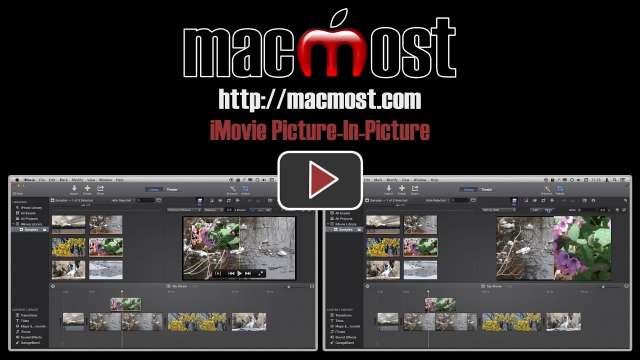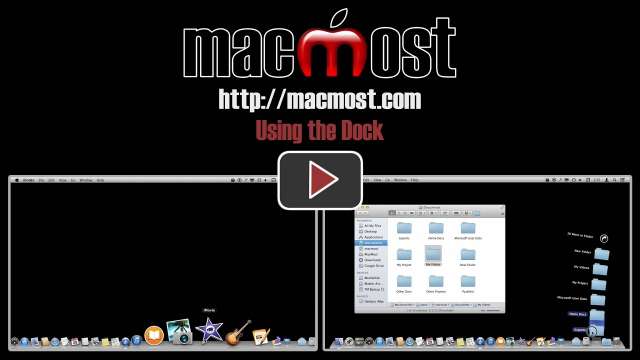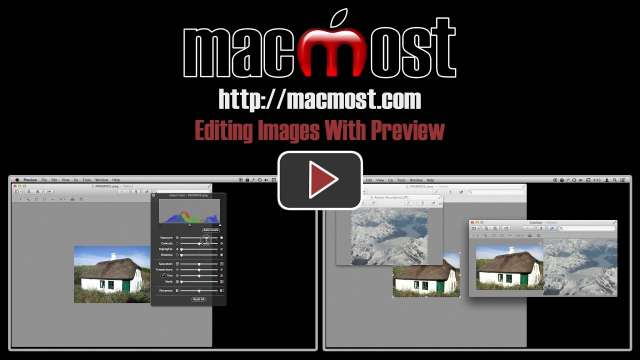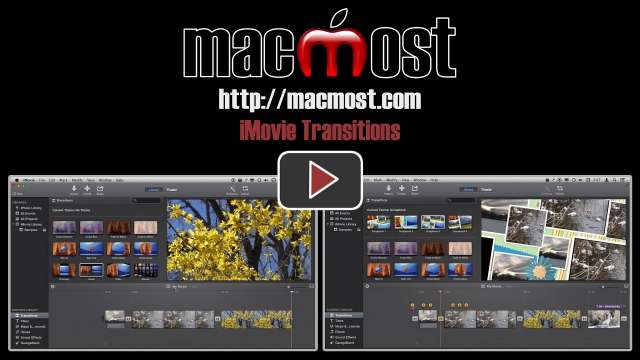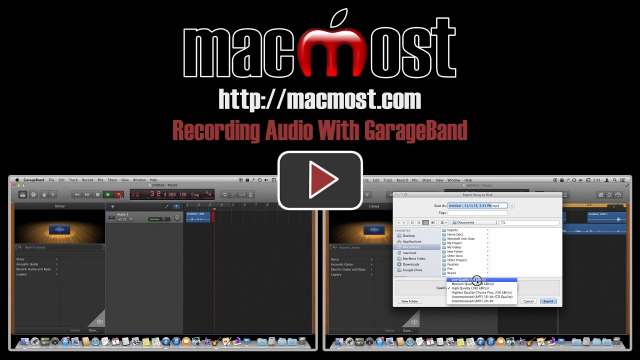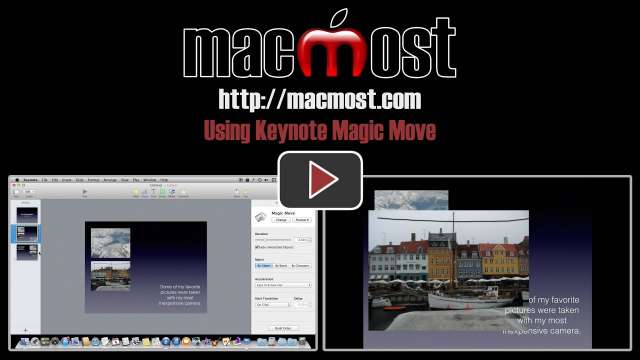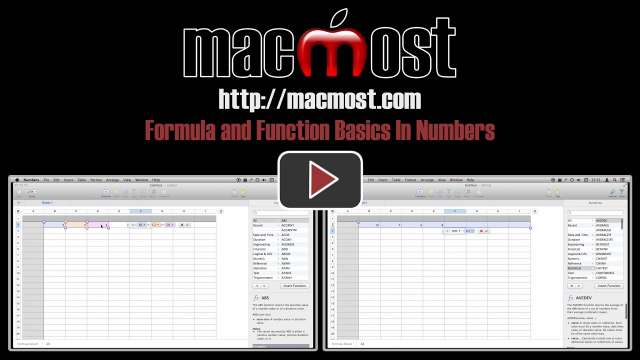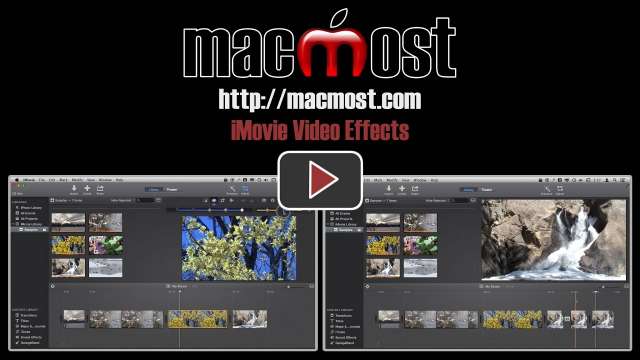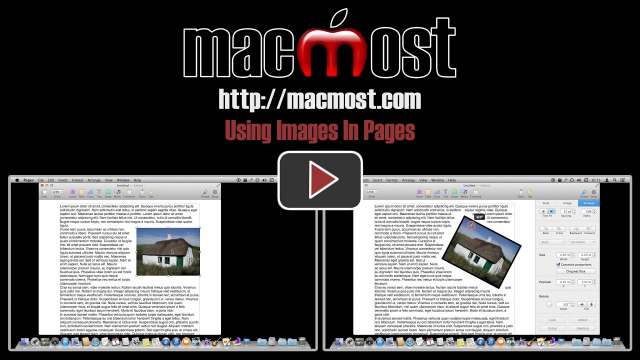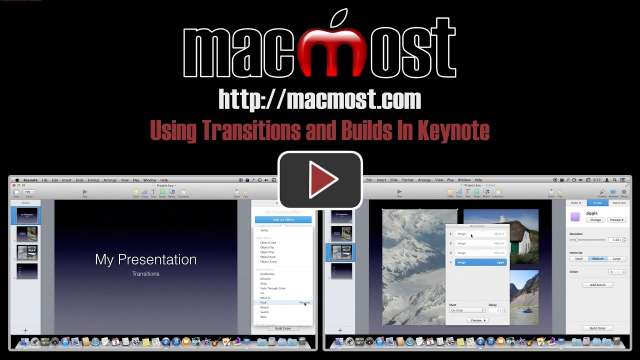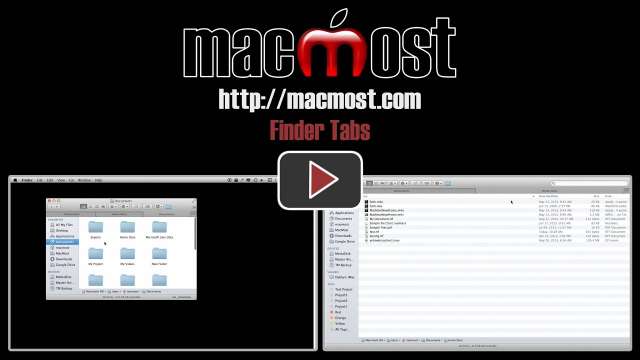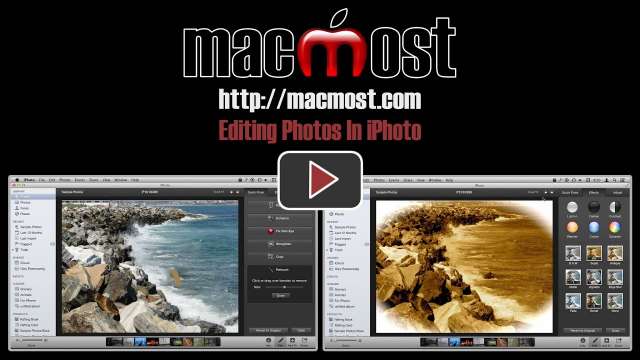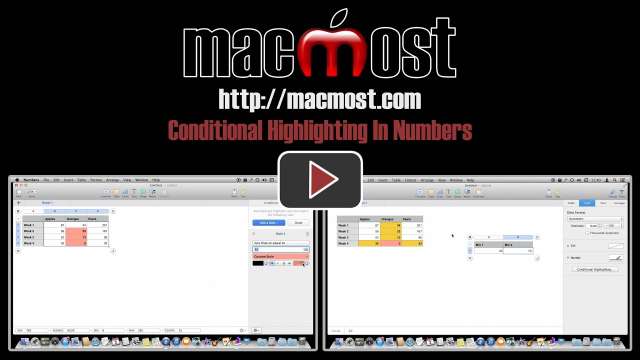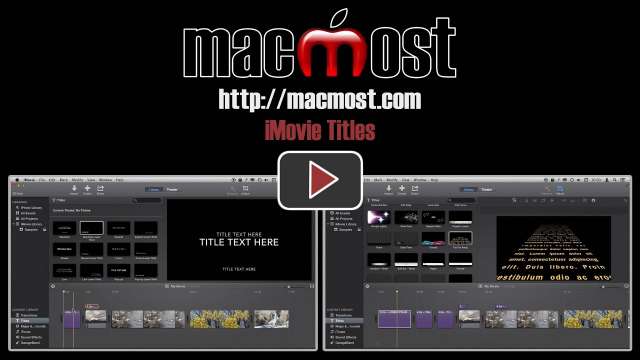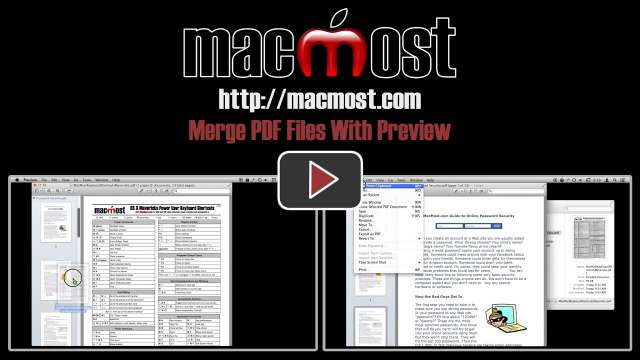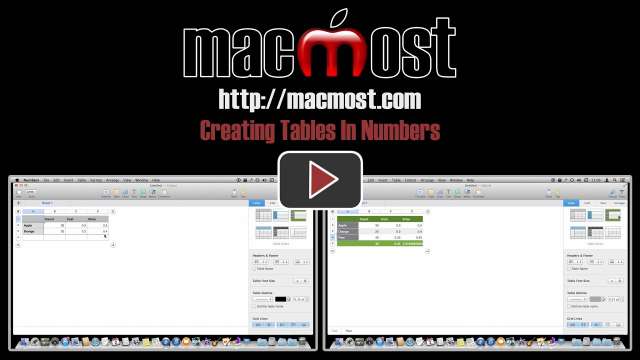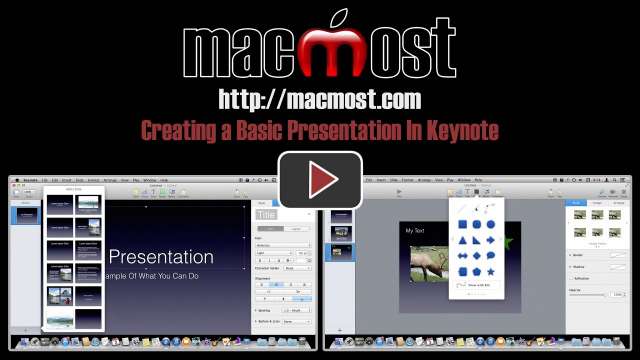12/16/13
You can place one video or photo over another in iMovie using picture-in-picture. Then you can position and resize the overlaying video. You can add transitions and even have the one video swap places with the other. Side-by-side is a similar effect that places two videos next to each other.
12/13/13
The Mac OS X Dock is a handy device for launching applications and accessing important folders and files. You can customize the look and location of the Dock. You can add apps to the Dock, and also files and folders. Folders in the Dock are called Stacks and you can customize those to easily access the content in them.
12/11/13
You can use Preview to edit images without needing to take them into iPhoto or an app like Photoshop. You can adjust the colors in an image, crop it, rotate it and even copy and paste portions of the image from one image to another. You can also resize and then export an image, which is something you may want to do before sharing a photo online.
12/9/13
Learn how to put transitions between your video clips in iMovie. You can specify exactly where each transition starts and ends with the precision editor. You can also quickly apply transitions with a keyboard shortcut or have them automatically fill in as you add more clips. Special iMovie themes have custom transitions that work in special ways.
12/6/13
You can use GarageBand as a way to record your voice or anything with your Mac's microphone. You can record bits and pieces and rearrange and edit them. You can also overlay tracks. Each track can be altered with editable filters. You can then export your audio as a standard file to share or use in other software.
12/4/13
Magic Move allows you to create custom animated transitions between slides. Elements will smoothly move from their positions on one slide to their positions on the next. You can use this to emphasize objects or create a flow between slides instead of jumping between completely different screens. You can animate images and other objects, and also create special effects between the words or characters in text boxes.
12/2/13
Learn how to use simple formulas in Numbers to calculate results. You can use basic math operations or complex functions from a library. You can feed these functions single cells or ranges of cells. You can also copy and paste formulas to perform the same calculations on other rows or columns.
11/29/13
Learn many different ways you can launch apps on your Mac. You can use LaunchPad or access the apps right from the Applications folder. You can use the Dock, and create custom Stacks of apps in the Dock for access to even more apps. You can also use the Spotlight Menu or open documents to run apps. Some more obscure ways to launch apps include the Terminal window and using Speakable Items.
11/27/13
Explore iMovie's video effects. You can make color and quality adjustments on each video clip. You can also apply a variety of special effects, like aged film, to each clip. Controls let you speed up, slow down or freeze frame.
11/25/13
After you import an image into Pages, there are many ways to adjust it. You can play with the image settings to get it to look just right. You can crop and mask it. You can also choose how you want text to wrap around the image.
11/22/13
Use transitions to make moving from one slide to another more interesting. Use builds to add animation to objects as they appear and are removed from the slides. There are a variety of transition and build options, and each can be customized.
11/20/13
Finder tabs allow you to have more than one file view in a single Finder window. Each tab can contain the view of a different folder or location. Each tab can also use a different view mode. You can drag and drop files between tabs. You can also move tabs between windows and combine windows full of tabs. Full screen mode for Finder windows allows you to focus on your files in a single screen.
11/18/13
iPhoto has a set of photo adjustment tools that allow you to correct problems in your photos as well as add enhancements and fun filters. You can edit a photo, layering several effects on top of each other, and still revert to the original even after you are done editing.
11/15/13
Learn how to use conditional highlighting to make cells in your tables stand out. Your can search for a number of different criteria and then change the color or styling of cells depending on the match. You can even have multiple conditions and give them priority. You can also use other cells and formulas as input for the conditions.
11/14/13
“My smart watch is so much better than your old-fashioned watch!”
“Oh yeah? When the battery is dead, mine is still right twice a day.”
11/13/13
iMovie includes a variety of useful titles that you can use in between clips or on top of them. Some of the titles allow you to change the font style and other elements. Sometimes the creative use of spacing, extra lines and justification can let you customize them further. You can also use your own images for completely customized titles.
11/11/13
You can use Preview to easily merge two PDF files, or bring pages from one into the other. You can also create new documents from pages selected from another PDF. You can even bring images into PDFs as new pages.
11/8/13
When you create a basic table in Numbers, it is important to use Headers and Footers properly. Headers allow you to define the contents of rows and columns, and you will see these labels appear in formulas and charts. Footer rows allow you to perform functions like SUM and AVERAGE on an entire column, with the formula adjusting to the content in between the header and the footer.
11/7/13
“I really hate iTunes 11.”
“iTunes is bloatware. It tries to do way too much. What do you hate about the new version?”
“They removed some thing.”
11/6/13
Learn how to use Keynote to create a simple presentation that includes text and images. You can choose from a variety of templates, and then add slides from that template. You can populate the slides with your own information and then play back the presentation.

